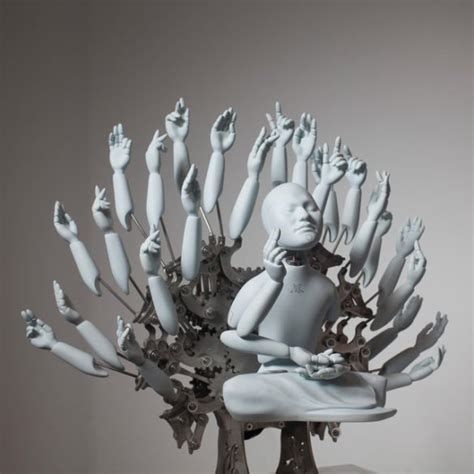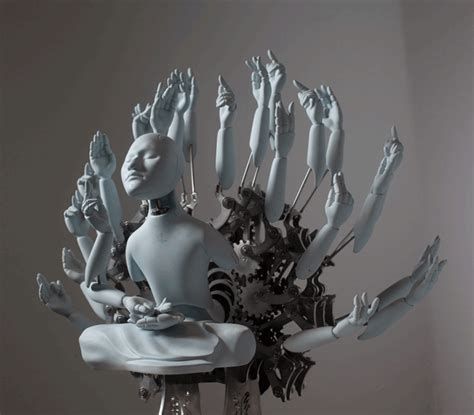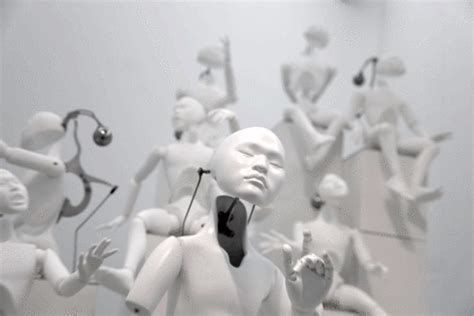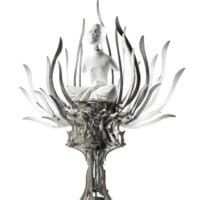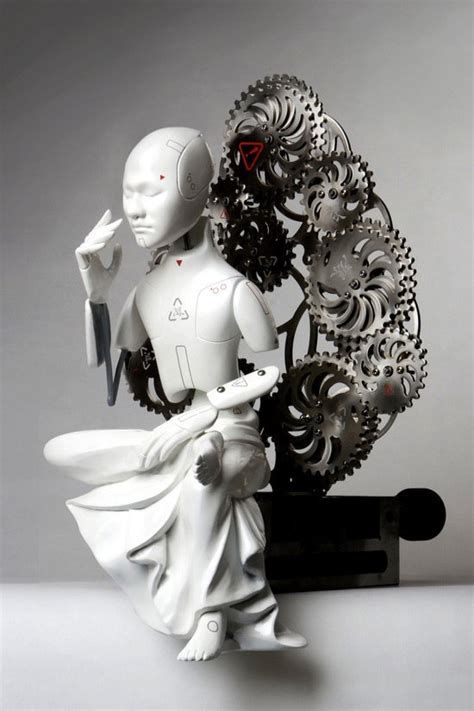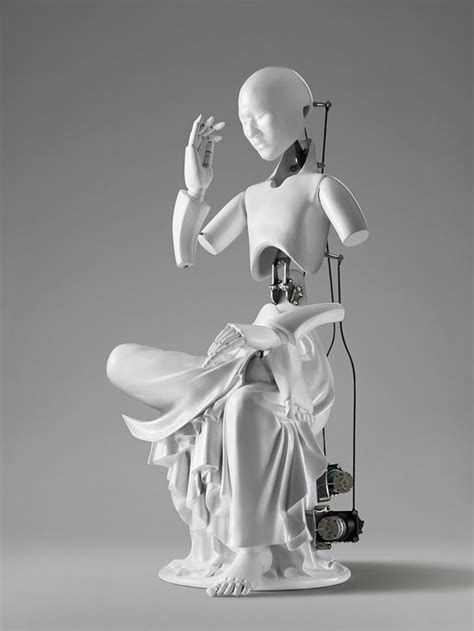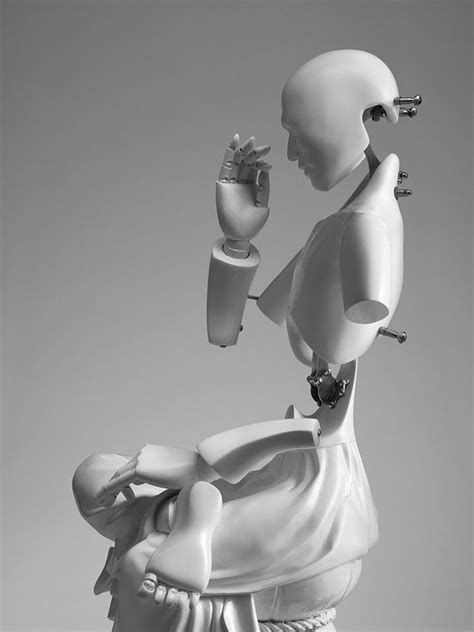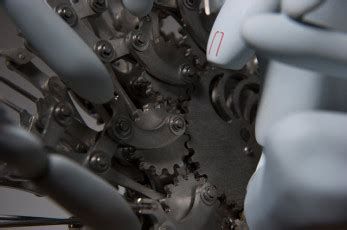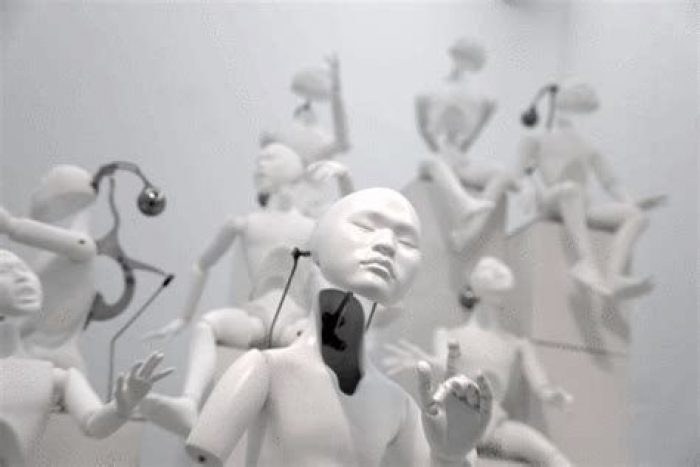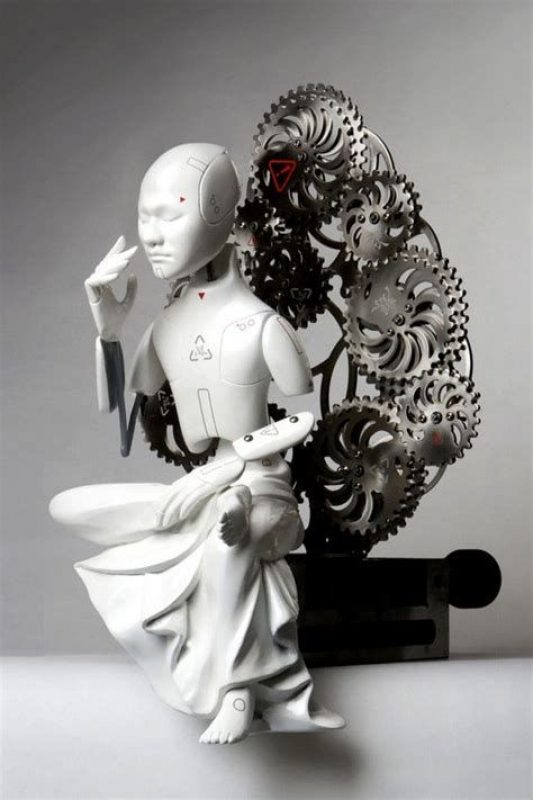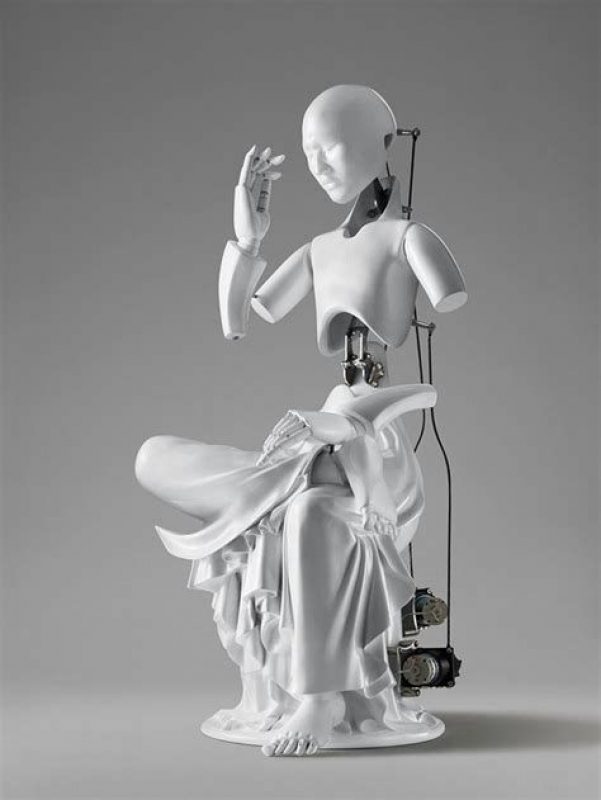The question of human integration with machines seems no longer to be one of if, but of how much. The answer to this is far out of the purview of this review and I won’t touch it. Someone who will, however, is the South Korean artist Wang Zi Won. He creates incredibly intricate and functional sculptures of Buddha and various bodhisattva (enlightened being), using working cods and gears which run off electric motors to produce repetitive and cyclic motions. The gear-works are both functional and stylistic- resembling halos and lotus arrangements amongst other things. Below, in the artist’s statement, his philosophy is further fleshed-out.
The artist predicts that in the future humans will evolve and adapt themselves to enhanced science and technology just as men and animals in the past evolved to adapt themselves to their natural circumstances. He sees this future as our destiny, not as a negative, gloomy dystopia. His work is thus based on neither utopia not dystopia. Wang represents the relations between man, technology and science through the bodies of cyborgs.
The artist considers it important to escape from human bondage in order to achieve harmony between men and machines. He thinks this harmony can be achieved through the process of religious practices and spiritual enlightenment. In Buddhism, the Bodhisattva of Compassion helps people attain enlightenment, Arhat is a spiritual practitioner of asceticism, and Buddha is a being who reaches the highest level of enlightenment. Through them, the artist intends to follow the path of enlightenment, breaking away from anxiety, agony, and pain. The artist has no intention to emphasize religious connotations through these Buddhist icons but to reflect his own or our own existence between utopia and dystopia.
